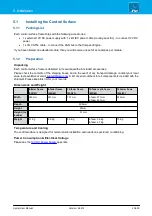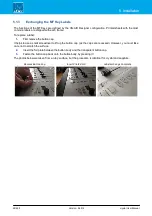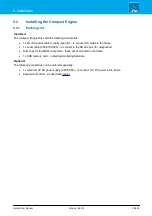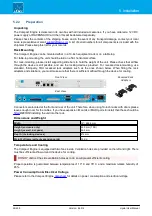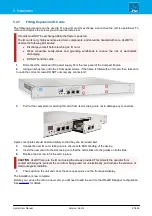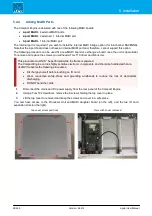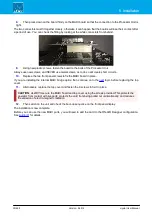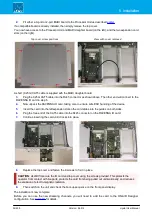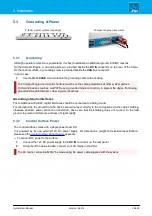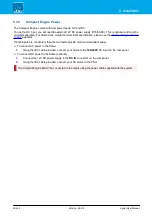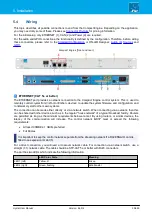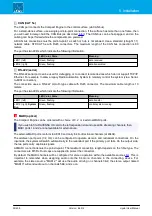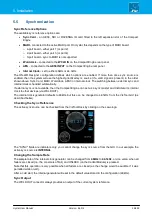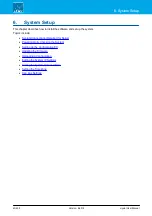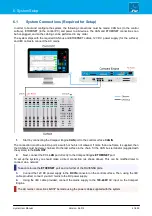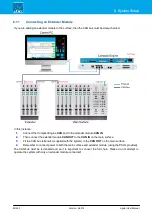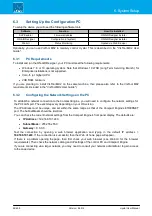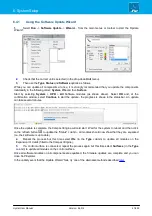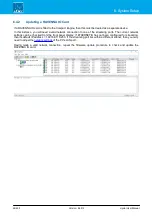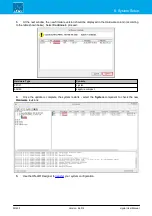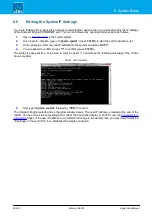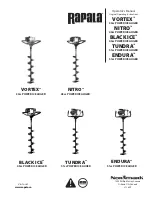
crystal User Manual
Version: 6.6.0/2
37/459
5. Installation
5
Expansion Slots - additional IO
The wiring from the two expansion slots is dependent on the IO card.
For
analog and digital IO
, please see the notes under item 6.
The
RAVENNA IO
card (952/38) provides two AoIP streaming ports (CAT 5/6/7). These can be used to stream
audio to and from an IP network.
If the card is fitted to the left expansion slot, then this can be connected, internally, to MADI port 1 to provide 64
bi-directional streaming channels. In this instance, MADI ports 1 and 2 are not available for external use. If the
internal MADI bridge is not fitted, or the card is fitted to the right slot, then it provides 8 bi-directional streaming
channels.
By default, the RAVENNA IO channels will be configured for stereo streams, and are transmitted and received
via the ETHERNET A port. The streams are fully compatible with the SMPTE ST2110-30/31, AES67 and
RAVENNA standards. Optionally, you can use both interfaces (A and B) to support redundant streaming via
SMPTE ST2022-7, Seamless Protection Switching. This requires some modification of the streaming
configuration and a supporting network infrastructure.
The connection(s)
must
be made via a network switch and
not
directly to another streaming port. Use a straight
(1:1) STP-CAT 5 network cable with RJ45 connectors.
The streaming network
must
be properly configured and managed. i.e. it must use a suitable network
architecture; all components must support multicast (as opposed to unicast); a proper Quality of Service
(QoS) must be configured; and so on.
Please
DO NOT
attempt to connect the streaming ports using an unqualifying IP network, as correct
operation cannot be guaranteed.
You can find more details about the data network requirements and suitable components in the
.
6
ANALOG & AES3 IO
The connectors on the rear panel can be used to connect your other audio devices:
·
HEADPHONE 1 & HEADPHONE 2
(6.35mm stereo jacks) - 2 x stereo headphone outputs.
·
LINE OUTPUT
(37-pin D-Sub male) - 8 x line level outputs.
·
MIC/LINE INPUT
(37-pin D-Sub female) - 4 x mic/line level inputs and 4 x line level inputs.
·
AES3 INPUT
(15-pin D-Sub female) - 4 x AES3 inputs.
·
AES3 OUTPUT
(15-pin D-Sub male) - 4 x AES3 outputs.
All LINE IN and LINE OUT connections are electronically balanced. For LINE OUTs, the maximum analog level
can be adjusted to +12, +15, +18, +21 or +24 dBu relative to digital full scale (dBFS). This is a factory-
configured setting; +24dBu is recommended.
Each of the 4 MIC/LINE INs features a discrete class-A preamplifier with superb performance at both low (mic)
and high (line) levels. In addition to variable microphone pre-amp gain, each input comes with switchable 48V
phantom power, a high-pass filter and 20dB PAD. The pre-amp gain can be automatically adjusted using the
feature. The maximum analog input level (with the PAD enabled) is +24dBu.
All AES INPUTs and OUTPUTs conform to the stereo AES3 standard. The four AES INs have sample rate
conversion (SRC).

